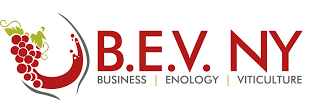Winery Laboratories analyze and measure several important wine components, and generally use methods and equipment that have been adapted for their in-house use from common textbooks and suppliers. Few, if any, methods are rigorously standardized across the industry. This presentation will address how a laboratory can determine and understand the analytical method performance parameters (such as accuracy and precision), and, just as importantly, we will discuss why it would matter to track and measure these parameters.
Patricia Howe, Instructor, UC Davis Continuing and Professional Education
Patricia Howe has over 35 years of production winemaking experience and enological problem-solving, having worked at or consulted for dozens of large, medium and small wineries across the US. She has a BS in Fermentation Science, a MS in Food Science (Sensory Science emphasis) from UC Davis, and a PhD from Cornell University, where she contributed to the further understanding of the chemistry of sulfur dioxide in wine.
Her business experience includes operating 16019, once the smallest freestanding bonded winery in the US; opening ASCENT Laboratories, LLC, an applied sensory and analytical wine laboratory in Napa, CA, and starting a satellite wine analytical laboratory for ETS Laboratories in Roseburg, Oregon.
She has taught winemaking, wine analysis, and winery sanitation at Cornell University, Napa Valley College, and through the VESTA program, and managed the UC Davis teaching laboratories. Pat is also past president of the ASEV and was co-founder of the California Enological Research Association. She currently serves as co-chair of the ASEV Ad-hoc Lab Proficiency Committee. She is a frequent presenter and writer on sensory, chemistry, and wine quality issues.
She currently is employed by UC Davis as a Lecturer in the department of Viticulture and Enology and as an Instructor in the Continuing and Professional Education program.


